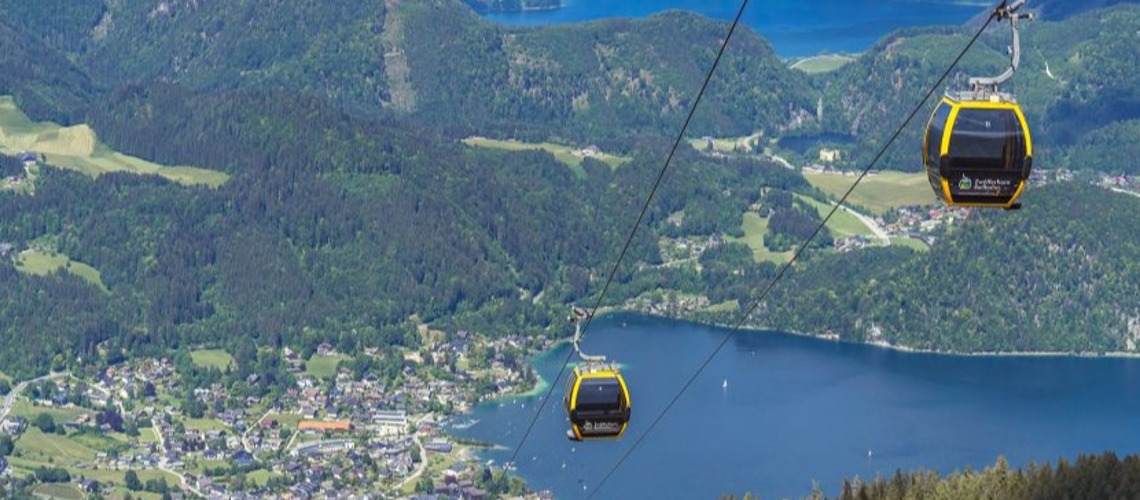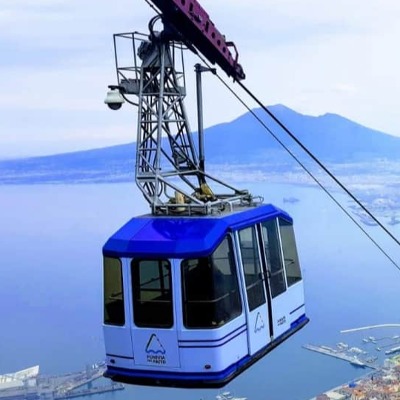World's First Energy Autonomous Cable Car Opens On Zwolferhorn In St. Gilgen

The time has come: the yellow and red gondolas will now travel up the popular local mountain in St. Gilgen am Wolfgangsee using only the power of nature. A project that is intended to set an example for the entire cable car industry in terms of sustainability and environmental protection.
"It is a very personal concern of mine to show that sustainable development in tourism can work, and we have succeeded in doing this very well at the Zwölferhorn," says managing partner Dkfm. Mario Stedile-Foradori, who is completely satisfied with the construction of the photovoltaic system on the southern slope of the mountain station.
A construction project that could hardly have been more exemplary. Even during the construction phase, great importance was attached to making the construction as environmentally and climate-friendly as possible. In comparison to conventional construction sites, over 20,000 kg of CO2 were saved by deliberately implementing measures by supplying the construction site with green electricity. The HTB company completely avoided helicopter flights, as is common in conventional mountain construction, and installed a construction crane instead. Small equipment was used with battery power, while energy-intensive digging and drilling work was powered exclusively by electric compressors.
This innovative and future-oriented approach corresponds to the shared philosophy of the companies involved in the construction, whose actions are based on ecological, economic and social sustainability. "The solar power plant on the Zwölferhorn enables sustainable regional energy production on a large scale. At the same time, the plant has been optimally embedded in nature, so that the enjoyment of nature on the Zwölferhorn remains undisturbed," explains Christoph Larch, Managing Director of Synecotec, who is responsible for project development as well as for the implementation of the photovoltaic system.
The plant went into test operation on June 21st and was pleased with initial data that was even better than expected. If operations continue to be so successful, the plant would achieve even better results than planned and at the same time the municipality of St. Gilgen would benefit from an even greater overproduction of electricity. "The local sustainability that we have achieved with the establishment of the energy community in St. Gilgen is unique. I am proud to be able to supply public facilities in our municipality with solar power through this joint project," says Mayor Otto Kloiber, enthusiastic about the realization of a long-standing vision.
Only 18 months have passed since the first contact with the companies carrying out the work. A speed of implementation that nobody thought possible at the time. "But everything spoke in favor of the project, everyone involved was enthusiastic and there was fortunately little skepticism. This meant we could concentrate on the essentials, the development of this prototype, which I claim is a showcase model," says Zwölferhorn Managing Director Arthur Moser, who is grateful for the trusting cooperation on this innovative project.













